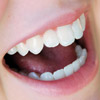Hole lotta love: Sealing pits in your child’s teeth
Teeth have natural dips or grooves in them, known as pits or fissures. We know that little monsters like to put all sorts of things in their mouths and these grooves can house all sorts of bacteria, resulting in tooth decay. So taking your little monster to a dentist to seal these fissures is the best way to minimise the risk of tooth decay.
Groovy, baby
There are actually two types of grooves that can form in teeth. Pits are small indentations in the tooth surface, whereas fissures are the grooves that occur naturally in the biting surface.
They mainly occur in the back teeth but are not uncommon in the front. Because a toothbrush can’t really get right into those grooves, bacteria and calculus can build up easily. This is why it’s important to get them filled.
Seal to heal
Fissure sealants are a type of material used to seal up those pesky grooves. It’s perfect for kids with a high risk of tooth decay, such as kids who have already had a couple of dental cavities filled or who lack fluoride in their drinking water.
Up to 84% of decay in children’s teeth occurs in pits and fissures. Teeth protected with fissure sealants are 22 times less likely to decay than unprotected teeth. Now those are good odds.
Short in the tooth
There are different features of the teeth that can determine whether or not fissure sealants should be applied. For example, new teeth and those with deep grooves are most likely to be sealed.
If a child’s teeth have been in place for less than 4 years and haven’t experienced decay, they won’t need to be sealed.
Around 20% of children have fissure sealants. Dentists believe that if sealants were more common, tooth decay in children would be less common.
Applying the good stuff
Fissure sealants only take about 10 minutes to place. The dentist will clean the tooth from any contaminants and then apply a chemical to increase bonding. The sealant is then applied. There are many different materials that can form the sealant, so talk to your dentist if you would like more information.
Long in the tooth
Most of these fissure sealants should last for about 7 years, but they may last for less, depending on whether they were contaminated by blood or saliva during the process. About 30% of sealants become dislodged and need to be reapplied once. About 10% of the time, they may even need to be reapplied two or three times.
This will usually happen about 6 months after they’ve been placed, but you need to take your child to the dentist every 6–12 months just to check up on them anyway.
Add to this some good old-fashioned brushing, and your child’s teeth will be pearlers.
The tooth will set you free
Fissure sealants are a great way to protect your child’s teeth from decay. They are easy, fast and last a long time. Talk to your dentist so you can do the best for your child’s chompers.
More information
 | For more information on pit and fissure sealants, including why they are used, procedure and maintenance, see Pit and Fissure Sealants. |
Dates
Tags
Created by:

 Login
Login














